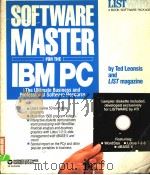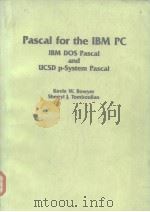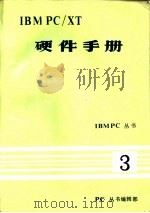《ASSEMBLY LANGUAGE PRIMER FOR THE IBM PC & XT》
| 作者 | ROBERT LAFORE 编者 |
|---|---|
| 出版 | 未查询到或未知 |
| 参考页数 | 501 |
| 出版时间 | 没有确切时间的资料 目录预览 |
| ISBN号 | 0452254973 — 求助条款 |
| PDF编号 | 811866688(仅供预览,未存储实际文件) |
| 求助格式 | 扫描PDF(若分多册发行,每次仅能受理1册) |
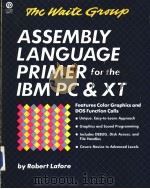
Introduction1
Is Assembly Language Really so Hard to Learn?2
Why Is This Book Unusual?2
Why Learn Assembly Language on the IBM PC?3
Who This Book Is For3
The Approach Used in This Book11
Assembly Language and Debug13
Assembly Language and Higher-Level Languages13
Microprocessors18
DEBUG Versus the Assembler19
The Window of the 8088's Soul21
Getting DEBUG Rolling21
Summary28
2 Instant Program29
Writing Your First Program29
Running the Program34
What an Assembler Really Does35
Assembly-Language Instructions37
Summary50
3What Is Assembly Language?51
Filling in Details52
Registers55
ASCII Display Program60
Some Sound Advice68
Summary81
4 Inside DOS--The Disk Operating System82
The Parts of DOS92
DOS Functions96
Writing to the Printer107
Summary118
5 Introduction to the IBM MACRO Assembler119
MASM and ASM120
What Does an Assembler Do?121
Assembling Your First Program125
Assembling SMASCII2133
Using a Batch File to Speed Assembly142
Summary145
6Using the IBM MACRO Assembler147
The BINIHEX Program148
New Instructions154
Using DEBUG's Trace Command165
The DECIBIN Program170
The DECIHEX Program183
Cross-Reference: Using the CREF Program187
Summary191
7 How Does It Sound?192
Why Use Sound?193
The White Noise Program193
The Machine Gun Program197
Generating Sound with the Timer208
Controlling Sound with the Keyboard215
Summary230
8 Memory Segmentation and EXE Files231
Memory Segmentation232
The PSTRING Program237
The PIANO Program as an EXE File249
The EXEFORM Program--A Nonprogram252
Segmentation and the String-Handling Instructions258
The Compare Strings Program262
Summary272
9 Inside the ROM273
Scan Codes and the Keyboard278
Video ROM Routines285
Summary293
10 Monochrome and Color Graphics294
Graphics Modes in the IBM PC295
Memory-Mapped Graphics297
Color Graphics309
Drawing Lines329
Summary344
11Reading and Writing Disk Files345
The Historical Perspective346
Floppies and the Fixed Disk347
Sequential Access349
Random Access373
Random Block Access378
Summary384
12 File Handle Disk Access385
Features of File Handle Access385
The ZOPEN Program388
The ZREAD Pragmm396
Writing to a File401
Getting to the Middle of a File408
Summary411
13 Interfacing to BASIC and Pascal412
General Interfacing Considerations413
Interfacing to BASIC with USR416
Interfacing to BASIC with CALL437
Interfacing to Pascal444
Summary452
Appendix A-Hexadecimal Numbering453
What Is a Numbering System?453
What Numbering System Do Computers Like?454
Appendix B-Supplementary Programs463
MEMSCAN463
HEXIDEC469
PRIME472
The Birthday Programs477
SAVEIMAG494
Index499
《ASSEMBLY LANGUAGE PRIMER FOR THE IBM PC & XT》由于是年代较久的资料都绝版了,几乎不可能购买到实物。如果大家为了学习确实需要,可向博主求助其电子版PDF文件。对合法合规的求助,我会当即受理并将下载地址发送给你。
高度相关资料
-
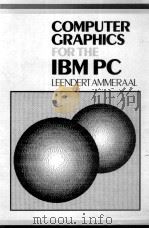
- COMPUTER GRAPHICS FOR THE IBM PC
- 1987 JOHN WILEY & SONS
-

- IBM PC/XT维修 上
- 1986
-

- IBM PC丛书 IBM PC/XT硬件手册 3
- PC丛书编辑部
-

- Excel macros for the IBM PC
- 1990 Windcrest Books
-
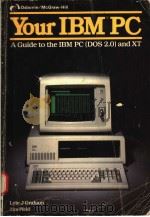
- YOUR IBM PC A GUIDE TO THE IBM PC(DOS 2.0)AND XT
- 1984 MCGRAW-HILL
-
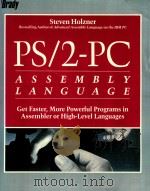
- PS/2-PC ASSEMBLY LANGUAGE
- 1989 BRADY NEW YORK
-
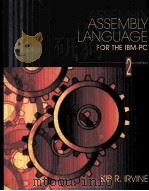
- ASSEMBLY LANGUAGE FOR THE IBM-PC SECOND EDITION
- 1993 PRENTICE HALL
-
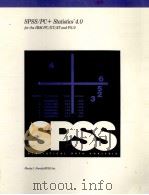
- SPSS/PC+STATISTICS 4.0 FOR THE IBM PC/XT/AT AND PS/2
- 1990 MARIJA J.NORUSIS /SPSS INC.
-
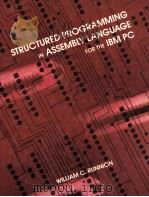
- Structured Programming in Assembly Language For The IBM PC
- 1988 PWS-KENT Publishing Company
-
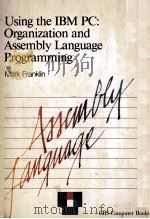
- Using the IBM Personal Computer:Organization and Assembly Language Programming
- 1984 CBS College Publishing
提示:百度云已更名为百度网盘(百度盘),天翼云盘、微盘下载地址……暂未提供。➥ PDF文字可复制化或转WORD

